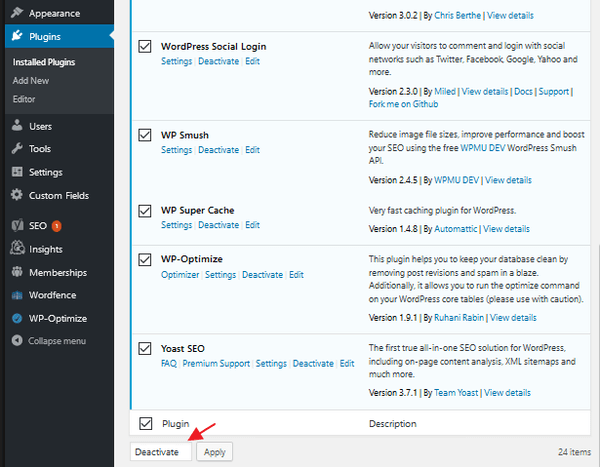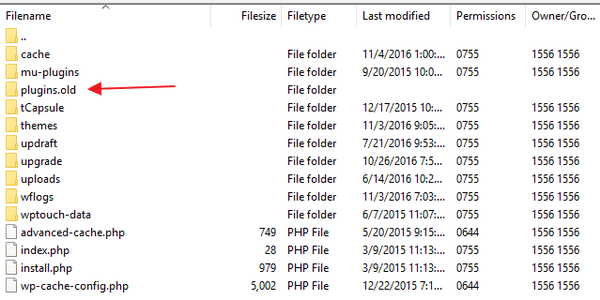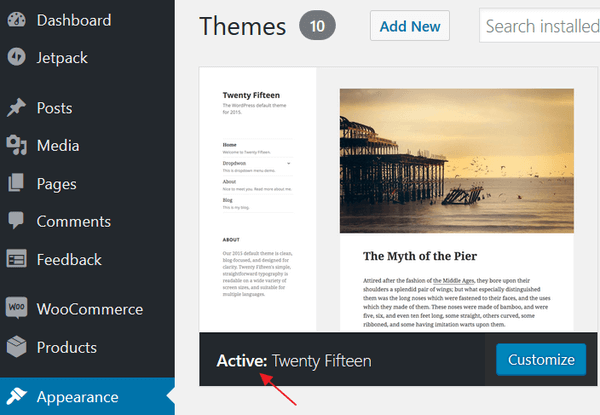If you an avid WordPress user, it is likely you have experienced the dreaded white screen of death.
What’s that? You don’t know what that is?
Well you can thank your lucky stars.
But for those that have, I feel your pain. Here you are, working on a blog post, optimizing images, just minding your own business when…BAM…all of a sudden your website is displaying a literal white screen. Worse yet, your website is loading fine, but you can no longer navigate your WordPress dashboard.
How are you supposed to get anything done now?
As one of the most common, and frustrating, issues you can have with your WordPress website, it is important that you gain some insight into what the white screen of death is, what causes it, and how to fix it.
What is the White Screen of Death?
The white screen of death, also known as the WSOD, is literally a white screen that takes over your entire WordPress website. Or maybe, the white screen has only invaded part of your website. Or maybe, you are only locked out of your WordPress admin panel.
There is no error message for you to troubleshoot or debug. There is no indication that anything you have recently done has caused this. In fact, the only thing there is to know is that something is wrong. Seriously wrong.
What Causes the WSOD?
There are several reasons why you may encounter the WSOD. Most often, the WSOD will fall under these three categories:
- An error generating due to a WordPress plugin
- An error generating due to a WordPress theme
- A database error such as exceeding the memory limit
In the event that your particular WSOD falls under an “unknown category”, rest assured that there are some troubleshooting tips for finding the underlying cause of your problem. However, the chances that your WSOD is due to an unknown error are slim.
That being said, no matter the reason your WordPress website has turned into a snowy white holiday, there is one thing you have to do before trying to rid yourself of this plague. Backup your website. That is, if you can. If you are locked out of your dashboard let’s just hope you follow best practices and regularly backup your website.
Before Troubleshooting the WSOD
There are some important things to ask yourself before beginning the journey to recovering your website. Answering these questions will not only direct you as to how to fix the WSOD, it will save you the time you would otherwise spend troubleshooting a fruitless problem.
Let’s take a look at those questions:
- Have you recently upgraded any WordPress themes or plugins? Even a slight upgrade has enough power to bring your entire website down if something goes buggy. That’s why many seasoned website owners suggest testing all plugins and their updates in a testing environment.
- Have you recently installed any new WordPress plugins? Again, if not tested properly, new plugins installed onto your website may bring bad news with them. Poorly written code, incompatibility with other plugins and your website’s theme, even just a plain old glitch in the installation process can wreak havoc on your hard work.
- Have you recently installed a new WordPress theme? Just like plugins, themes have the capability of bringing your website down. And, since many WSODs can be attributed to front-end issues, there is a good chance it is your theme causing it, especially if you recently downloaded it.
- Is your WordPress hosting provider reporting any issues? You may not realize it at the time, but it is quite possible there is a widespread issue circling the internet world that is affecting any websites your hosting provider maintains. Find out from them if any issues are present before troubleshooting your WSOD.
How to Fix the WordPress White Screen of Death
Remember those three categories I mentioned earlier that are often responsible for the white screen of death? Well, those culprits are exactly what you will target when trying to banish the white screen and bring back your website.
Here is how you can fix your white screen of death and get back to adding content, optimizing images, and minding your own business.
Check Your Plugins
Problem plugins are usually the reason why a white screen of death will appear on your website. Therefore, in order to stop the problem you need to find which one is the causing that problem.
If you have access to your WordPress dashboard (in other words, you are not locked out of your admin panel and simply have a white screen for a website) follow these simple steps.
Navigate to Plugins > Installed Plugins in your WordPress dashboard. Select one plugin (preferably the most recently installed). Chances are this will be the one causing the WSOD. Check your website and see if the WSOD is gone.
If this does not work, select all of your website’s plugins and disable all of them. Yes, every single one.

If your website is back up and running, great. Then enable each plugin one by one checking your website after activating each plugin. Eventually the problem child will reveal itself and you will know that to be the plugin causing the WSOD.
If you find yourself locked out of your WordPress dashboard (what a bummer!) you will need to connect to your website’s server via an FTP connection such as FileZilla and disable plugins from there, just as you did above.
Once inside of your site’s server via FTP, navigate to the wp-content directory of your WordPress website and rename the plugins folder to something like plugins-old.

Renaming the file folder will automatically disable all of your website’s plugins.
Check your website and see if the white screen is gone. If not, rename the folder back to plugins and continue the next troubleshooting options.
Replace Your Theme
Another very common reason you have a WSOD is due to a front-end issue like your WordPress theme. Here are ways to troubleshoot and possibly resolve the WSOD issue both with and without access to your WordPress dashboard.
If you have access to your admin panel, troubleshooting a theme problem is super simple. First navigate to Appearance > Themes from your WordPress dashboard. Activate one of the default WordPress themes such as Twenty Fourteen or Twenty Fifteen. This will change your website’s theme to a reliable theme that will not have compatibility issues with anything on your website.

Is your WSOD gone after refreshing your website? If so, congratulations. It is time to get a new theme and throw out whatever one you had installed on your website because it is no good.
If you do not have access to the dashboard, again access your website’s server via the FTP. Keep in mind, this will only work if you have one of the default WordPress themes uploaded to your website from an earlier time.
This is because once you access your website’s theme and rename it (just as you did with your plugin folder) to something other than its original name, your website will automatically default back to the default theme uploaded in your theme directory (i.e. the Twenty Fifteen theme).
Again, if the WSOD disappears after doing this, get a new theme for your website.
Increase Your Memory Limit
Sometimes our websites simply outgrow your hosting provider’s services. This can lead to memory exhaustion and yes, you guessed it, the white screen of death. It is basically your website’s way of giving up because it is too full. And, while this is great news (because your website must be growing!), a WSOD issue is never great news.
Here is how to modify your website’s memory limit until you can tap into more resources through your hosting provider.
First, locate your website’s wp-config.php file in your FTP server. It will be in in the root WordPress directory. Then add the following code inside the main php tag:
define ('WP_MEMORY_LIMIT', '64M');
This will change your website’s memory to 64M. Keep in mind that this number will depend on what your individual server can handle. Typically, 64M is a good number to stick with. If you add too much memory, you may experience other serious issues despite fixing the WSOD.
The way to avoid this issue in the first place is to use a reliable and quality hosting provider. The problem with inexpensive, dare I say cheap, hosting providers is that they cram as many customers on one server as possible. This is how they keep their costs down as well as yours. As a result, your resources are also low which can lead to the unsightly WSOD.
Not sure which hosting provider is best for you? Look here and get answers to all of your questions!
Other Tips for the WSOD
If your problem did not fall into the general categories most WSODs do, here are some additional things to try before giving up and throwing your computer out of the window (just kidding, don’t do that!):
- Install a fresh copy of WordPress onto your website
- Enable the WordPress debug function and see if any errors, warnings, or notices appear
- Empty your cache, especially if the WSOD only appears on long posts
- Increase your backtrack limit
If after performing all of these troubleshooting tips and tricks your WSOD is still hanging around, it is time to bring in a professional. Either get in touch with your hosting provider or enlist the help of a dedicated WordPress expert. They will have the knowledge to source the problem and fix it for you so that you can turn your downtime into uptime and get back to providing your readers what they want – great content, crisp images, and maybe even some discounted products.
Have you ever experienced the white screen of death? What steps did you take to fix it? I would love to hear all about it in the comments below!

